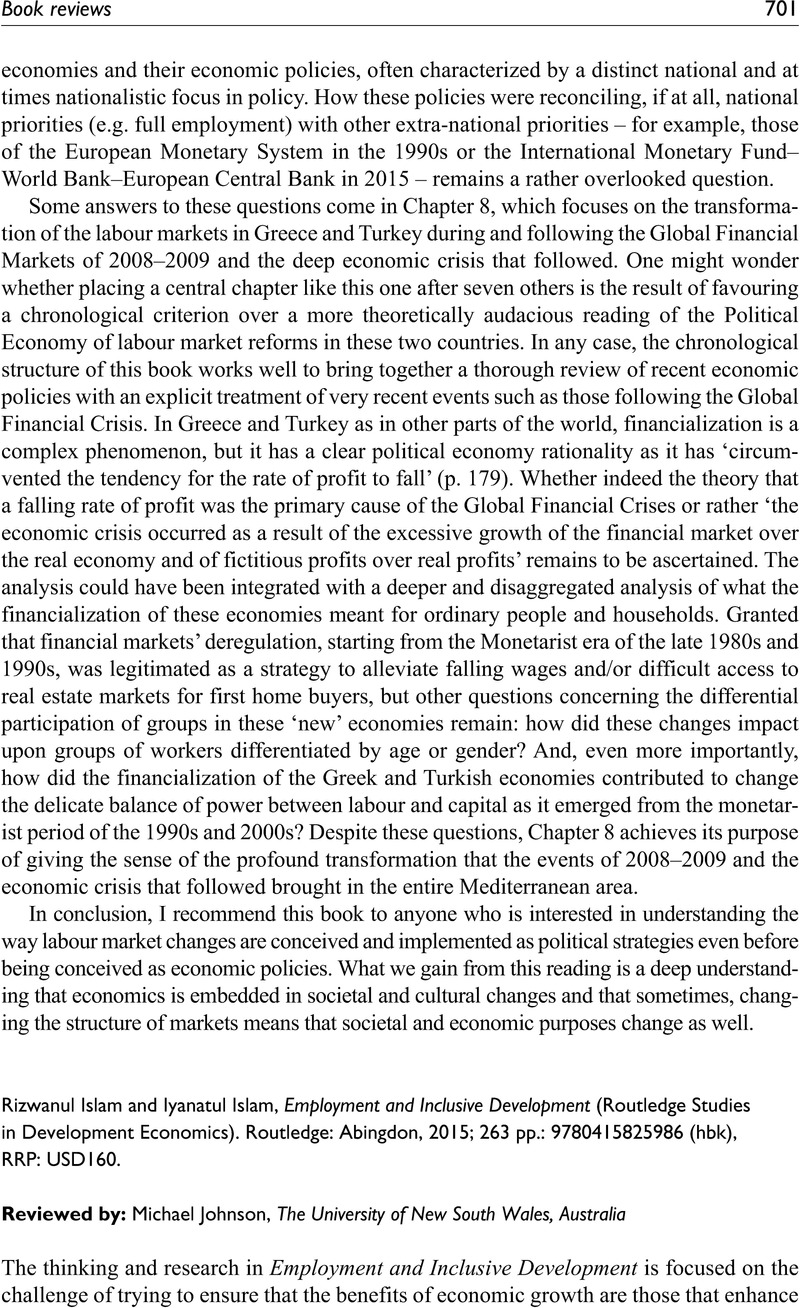No CrossRef data available.
Article contents
Rizwanul Islam and Iyanatul Islam, Employment and Inclusive Development (Routledge Studies in Development Economics). Routledge: Abingdon, 2015; 263 pp.: 9780415825986 (hbk), RRP: USD160.
Review products
Rizwanul Islam and Iyanatul Islam, Employment and Inclusive Development (Routledge Studies in Development Economics). Routledge: Abingdon, 2015; 263 pp.: 9780415825986 (hbk), RRP: USD160.
Published online by Cambridge University Press: 01 January 2023
Abstract
An abstract is not available for this content so a preview has been provided. Please use the Get access link above for information on how to access this content.

- Type
- Book reviews
- Information
- The Economic and Labour Relations Review , Volume 26 , Issue 4: Special Collection: Union Organising and Revitalisation , December 2015 , pp. 701 - 704
- Copyright
- Copyright © The Author(s) 2015
References
Organisation for Economic Co-operation and Development (OECD) Secretariat (2014) All on Board: Making Inclusive Growth Happen. OECD, Paris: Available at: http://www.oecd.org/inclusive-growth/All-on-Board-Making-Inclusive-Growth-Happen.pdf (accessed 15 August 2015).Google Scholar
Tarantola, D, Byrnes, A, Johnson, M, et al
. (2013) Human rights, health and development. In:
Grodin, M, Tarentola, D, Annas, G, et al
(eds). Health and Human Rights in a Changing World. New York: Routledge, pp. 154–178.Google Scholar


